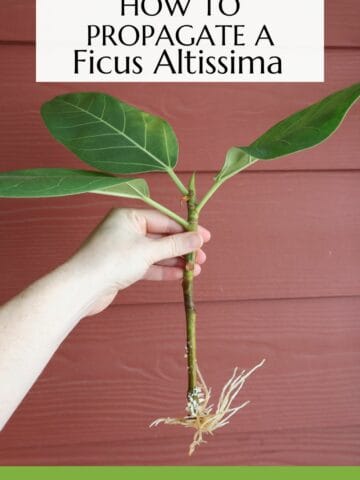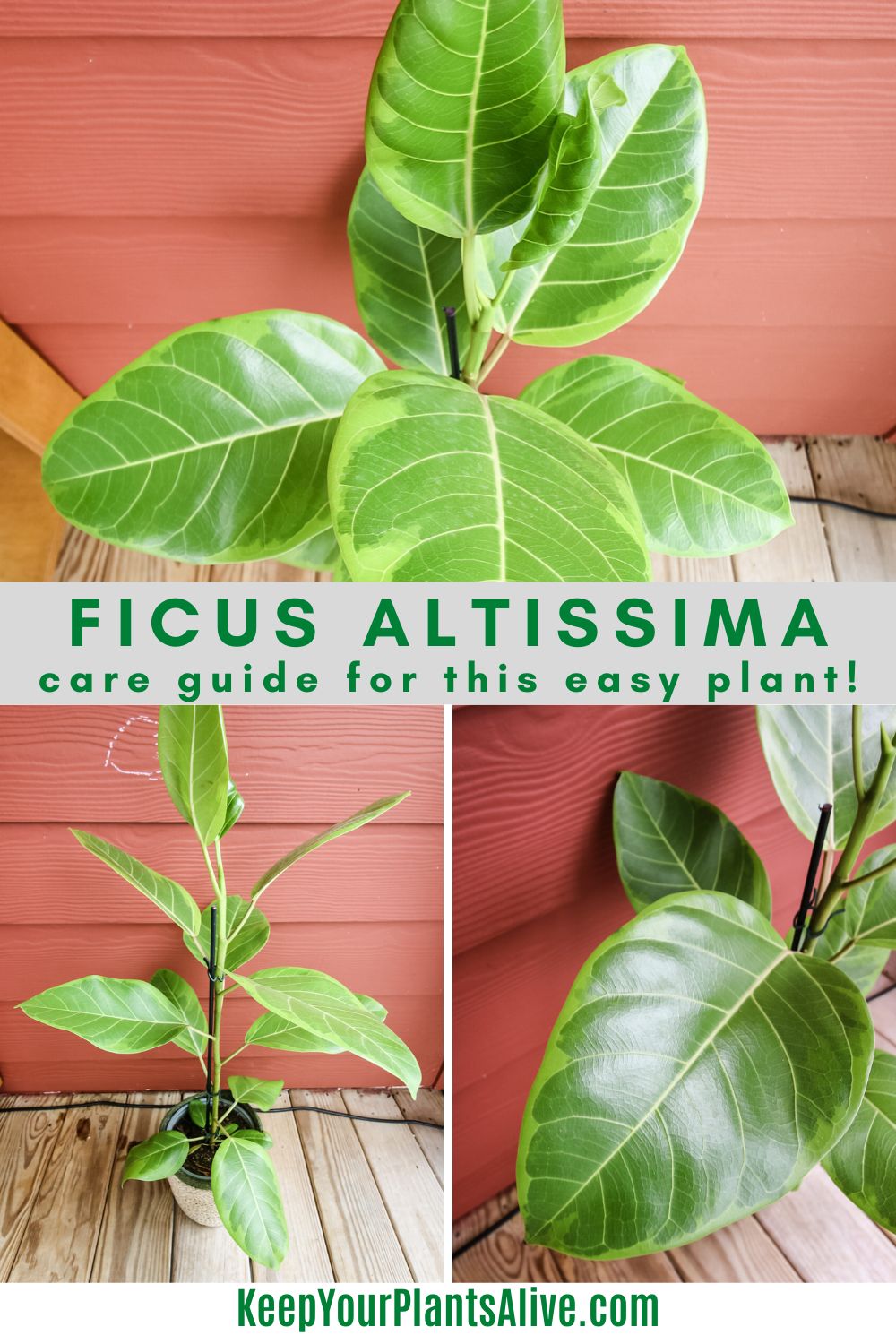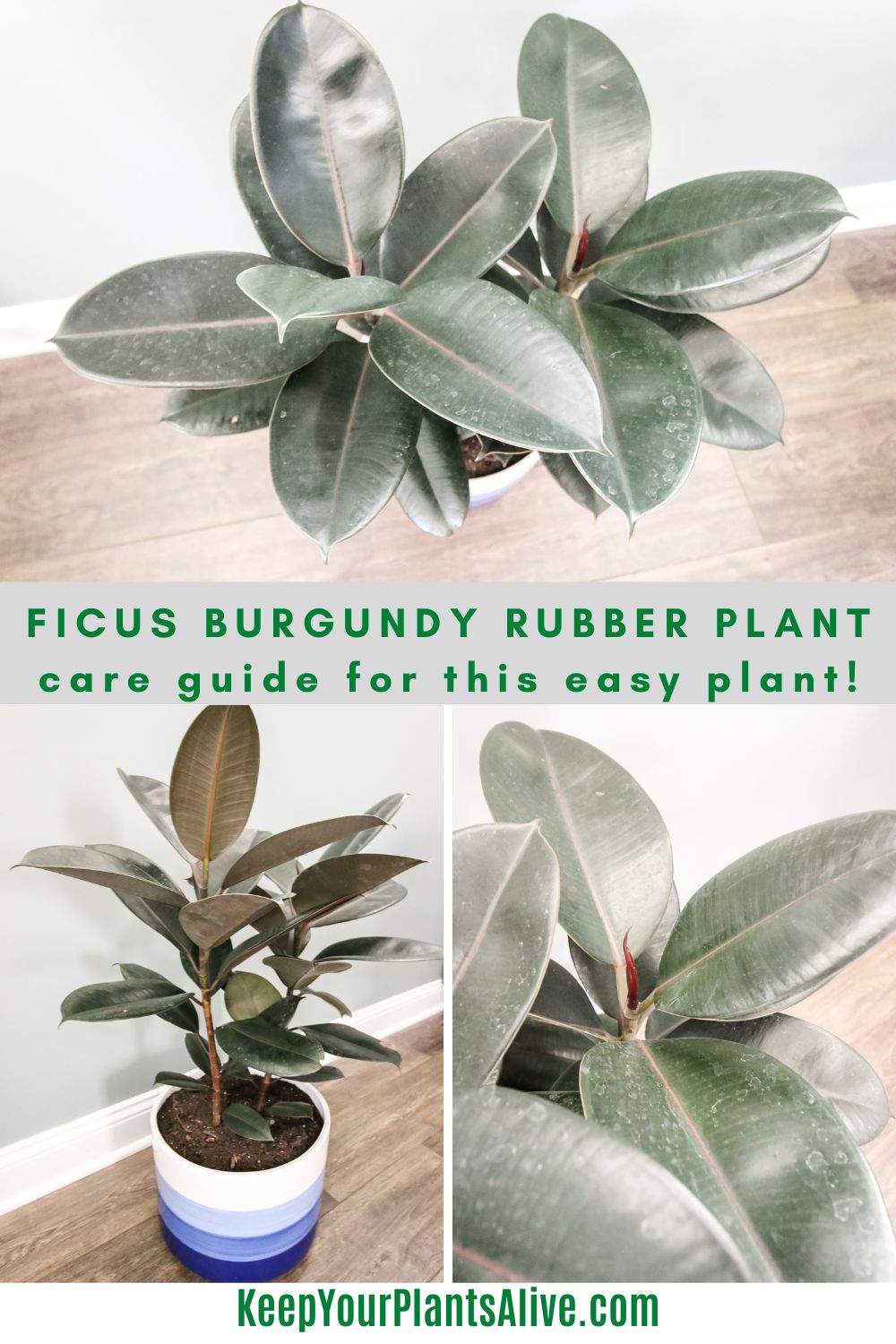Considering purchasing a new houseplant? Here's our complete variegated rubber plant care guide so you can keep it happy and healthy!
Do you ever go to the hardware store for a simple item and walk out with a few houseplants?
I recently went to home depot to get hooks to hang a few plants on our porch and walked out... with a little plant collection!
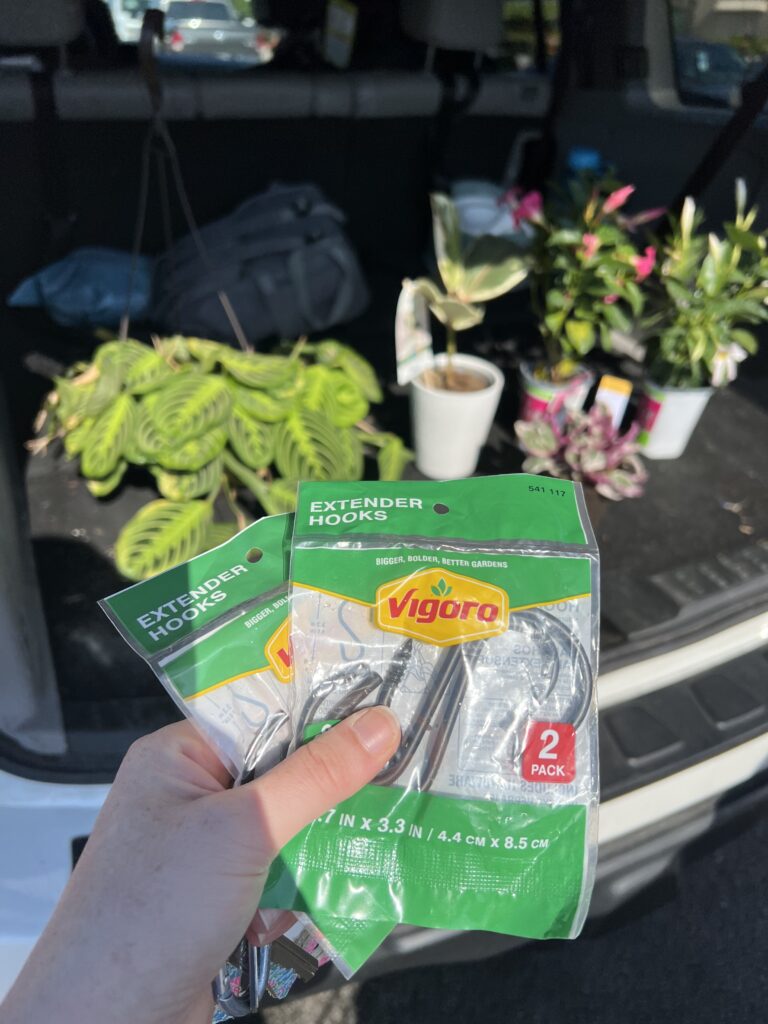
Amongst those plants was a Variegated Rubber Plant. While I already have a Burgundy Rubber Plant and a Ficus Altissima “little gem”, this variegated version was totally new to me.
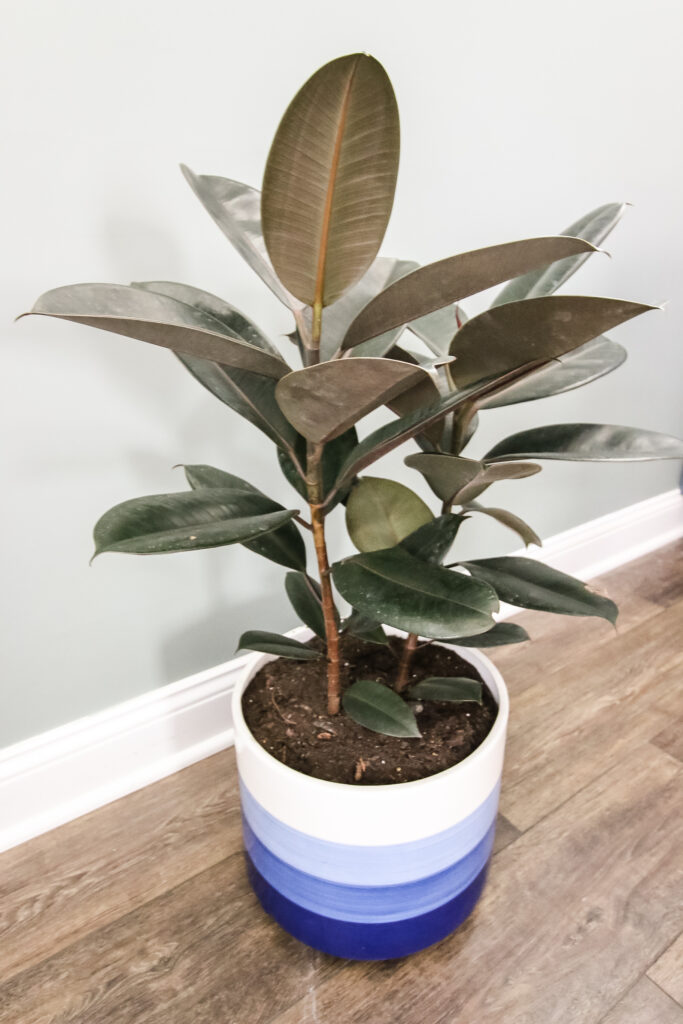
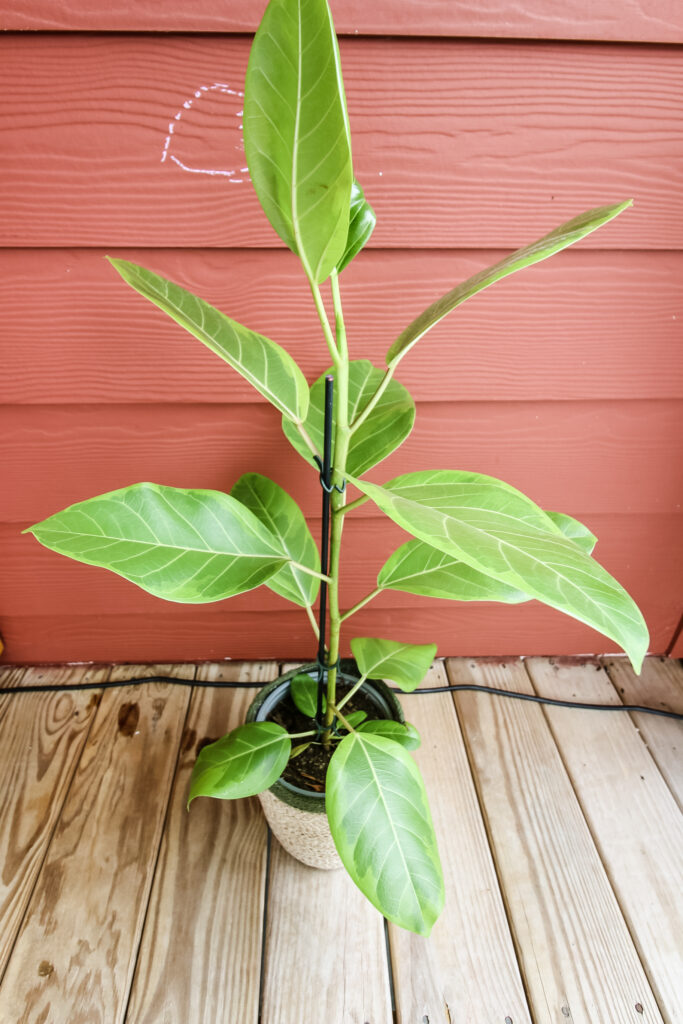
I just love the pink and white coloration and know that this will be an easy to care for plant to add to my collection.
So, let's talk about caring for this beautiful plant! We'll cover everything you need to know to ensure your Variegated Rubber Plant thrives!
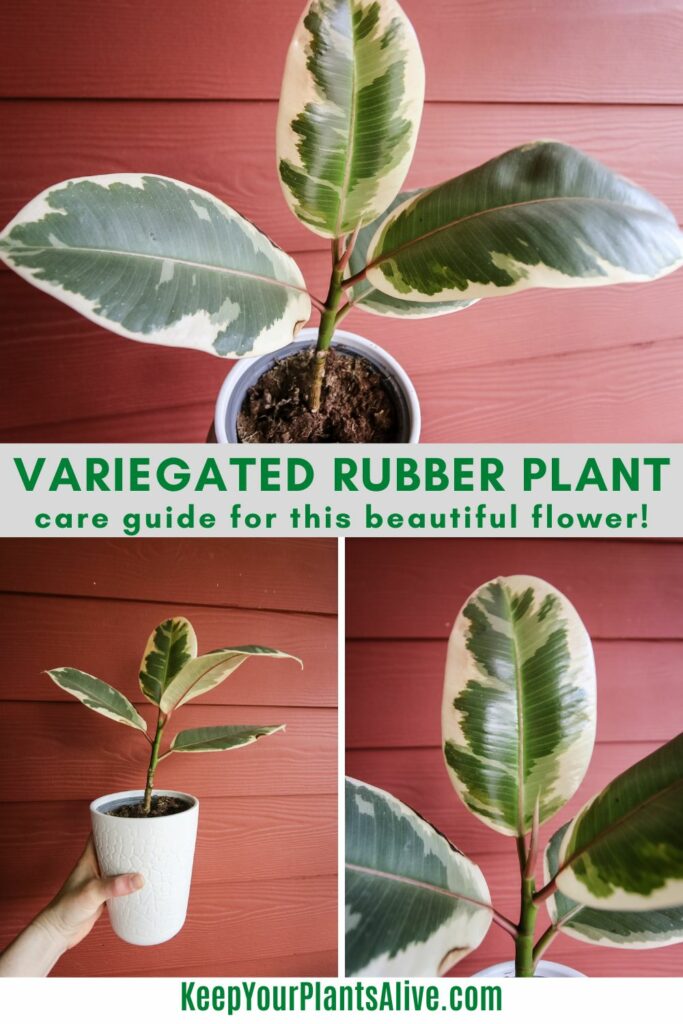
What is a Variegated Rubber Plant?
The Variegated Rubber Plant, also known as Ficus elastica 'Variegata', is a popular variety of the classic Rubber Plant.
It features leaves that are a mix of green, white, and sometimes pink, creating a striking visual impact.
Alternative names for the Variegated Rubber Plant include:
- Variegated Ficus elastica
- Tricolor Rubber Plant
- White Rubber Plant
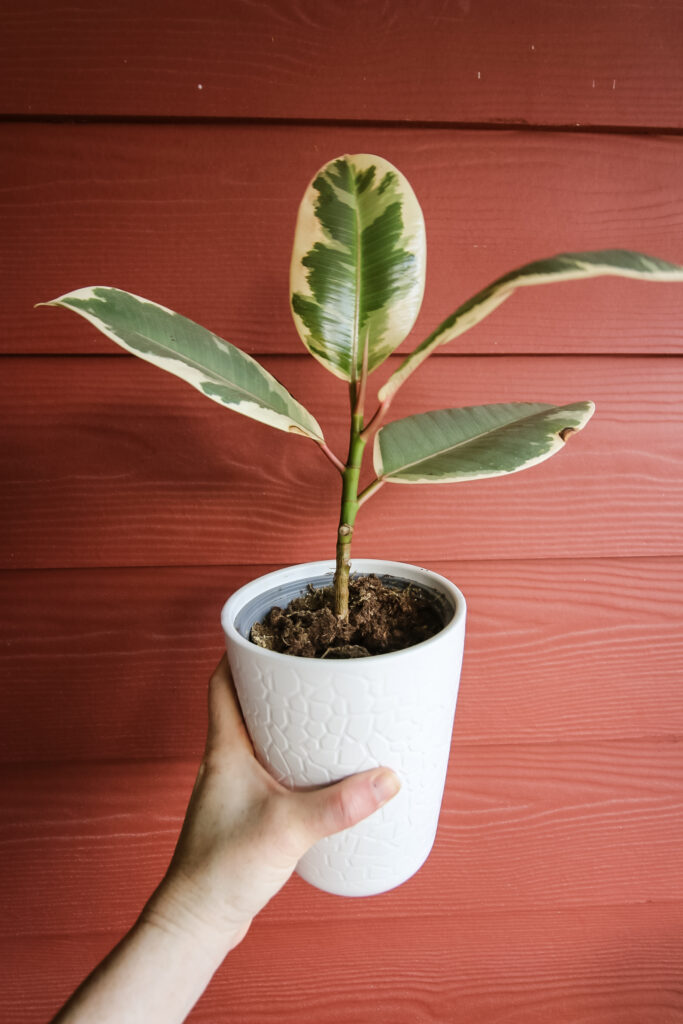
Variegated Rubber Plant Origins
Native to the tropical forests of South Asia, the Variegated Rubber Plant thrives in a warm and humid environment, which is essential to mimic for successful indoor growth.
Is the Variegated Rubber Plant Rare?
While not extremely rare, the Variegated Rubber Plant is super popular due to its unique and attractive foliage. I got mine at Home Depot, but they do sell out quickly!
It can sometimes be harder to find than the standard green Rubber Plant, and may carry a slightly higher price tag.
Is the Variegated Rubber Plant Toxic?
Yes, the Variegated Rubber Plant is toxic if ingested.
Its sap contains compounds that can cause irritation and discomfort in humans and pets.
Therefore, it's crucial to keep it in a spot away from curious children and animals.
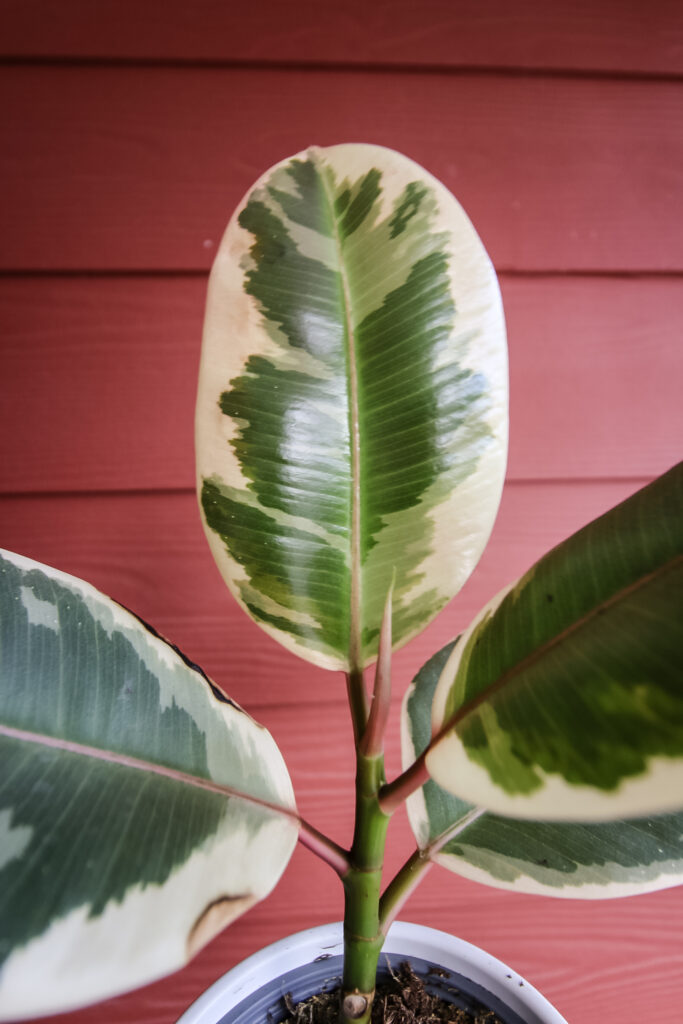
Variegated Rubber Plant Care Guide
Here are the essential care tips for keeping your rubber plant alive and happy.
Watering Your Variegated Rubber Plant
Proper watering is key to keeping your rubber plant happy. This plant prefers a balance of moisture and likes its soil to be allowed to dry out slightly between waterings.
Water thoroughly when the top inch of soil feels dry. Ensure the pot has good drainage to prevent root rot.
Here's my guide on how to drill drainage holes in pots!
Humidity and Misting
This plant enjoys humidity.
While not necessary, misting your Variegated Rubber Plant can help mimic its natural humid environment, especially during dry winter months.
Alternatively, use a humidifier or a pebble tray to increase humidity.
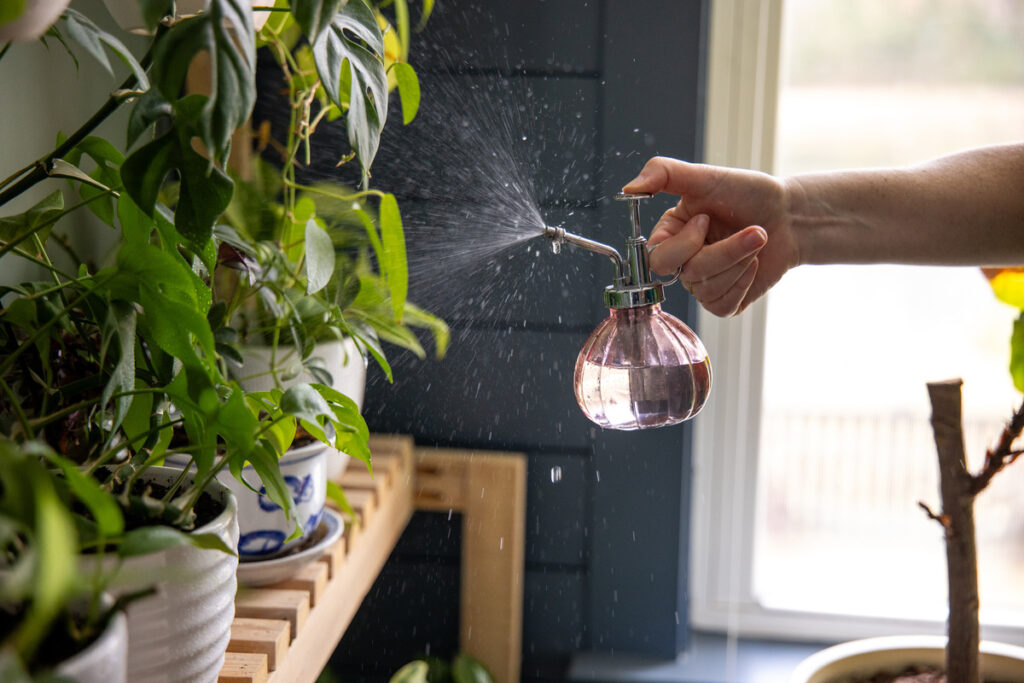
Light Requirements
Variegated Rubber Plants need bright, indirect light to maintain their variegation.
Direct sunlight can burn the leaves, while too little light can cause the variegation to fade.
Read my guide on special care for variegated plants!
Soil and Repotting
Choose a well-draining, airy potting mix designed for tropical plants.
Repotting every few years in the spring helps refresh the soil and provide room for growth.
When repotting, select a pot only slightly larger than the previous one (1-2" bigger across).
Fertilization
Feed your plant with a balanced, water-soluble fertilizer every month during the growing season (spring and summer).
Skip feeding in the fall and winter when growth naturally slows.
Propagation
Propagate your Variegated Rubber Plant by taking stem cuttings in spring or early summer.
Plant the cuttings in soil or place them in water until roots develop, then transfer to soil.
I prefer to use rooting hormone and cover cuttings loosely with a clear plastic bag (like a produce bag) to create a greenhouse effect, increase humidity, and improve the success of rooting.
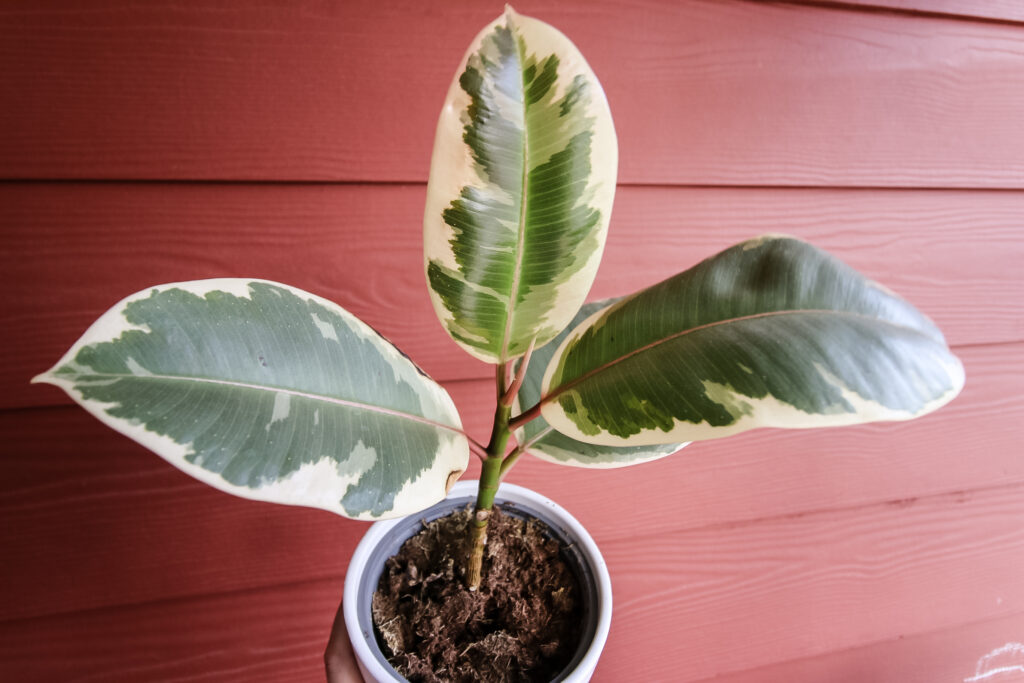
Variegated Rubber Plant FAQs
Here are some top questions about caring for these plants!
How often should I water my Variegated Rubber Plant?
Water when the top inch of soil is dry, typically once a week, but adjust based on humidity and temperature in your home.
Can I keep my Variegated Rubber Plant outside?
In warm climates without frost, yes, but keep it in a shaded area. Direct sun can burn the leaves.
Bring indoors when overnight temperatures fall below 50 degrees.
In cooler climates, it's best kept indoors year-round.
What should I do if the leaves of my Variegated Rubber Plant start drooping?
Check the watering schedule—overwatering and underwatering can both cause drooping.
Ensure the plant is not in direct sunlight and that it's not exposed to drafts.
Adjust your care and conditions by 1 element at a time to see what perks it back up!
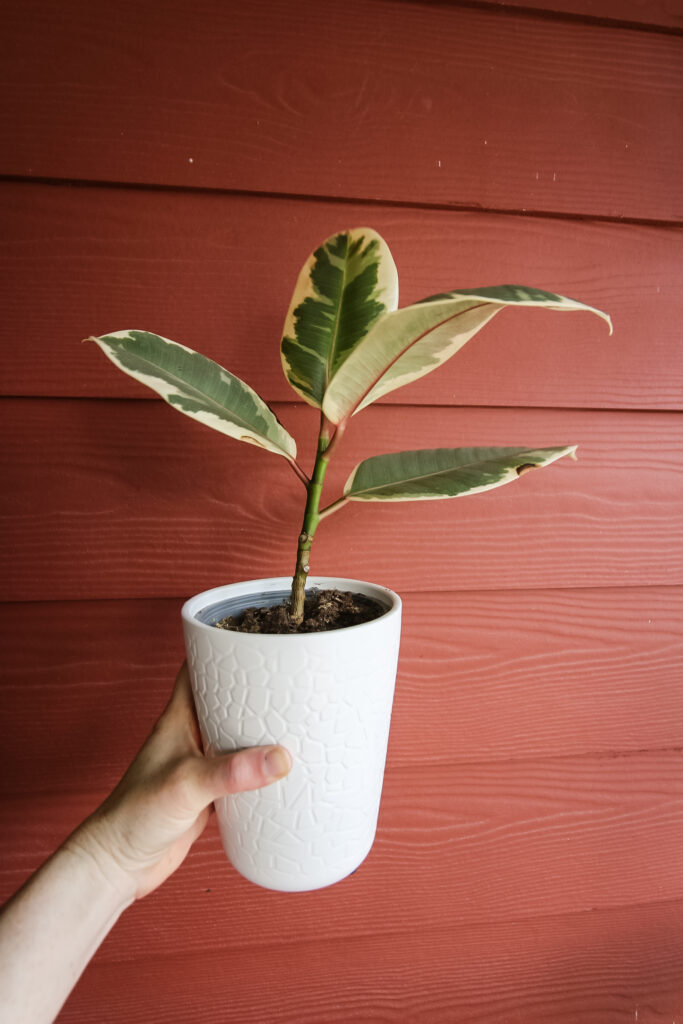
Why is my Variegated Rubber Plant losing its variegation?
Insufficient light is the most common cause. Move your plant to a brighter location with indirect sunlight to help preserve and enhance its variegation.
How can I increase the humidity for my plant?
Besides misting, placing a humidifier nearby or using a pebble tray filled with water under the plant's pot can help increase the surrounding humidity.
With the right care, your Variegated Rubber Plant will be an eye-catching addition to your plant collection, thriving and growing beautifully!
Thanks for reading!


Hey there, I'm Morgan, a houseplant enthusiast from sunny Charleston, South Carolina. Growing up surrounded by my mom's lush orchids and African violets, I discovered the magic of bringing nature indoors. Thanks to the pandemic, I delved deeper into houseplants, discovering their power to uplift moods and transform spaces. I'm here to spill all my secrets, helping you pick the perfect houseplant - and make it happy. Let's keep your plants alive, together! 😊

